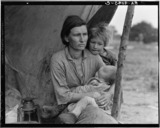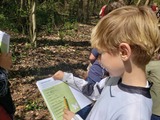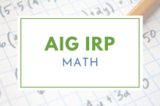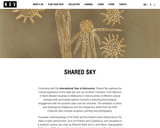
Students will learn how to design 3-Dimensional objects using Tinkercad.
- Subject:
- Arts Education
- STEM
- Material Type:
- Activity/Lab
- Lesson
- Author:
- JEANNIE TIMKEN
- Date Added:
- 11/18/2021

Students will learn how to design 3-Dimensional objects using Tinkercad.

This lesson will involve students in the process of identifying and labeling geography on a "blank" classroom World Map. The students will hear about historical and current immigration with pictorial representation and words to support students' understanding. Using these visuals, students have a deeper understanding of immigration around the world and are able to make inferences about cause and effect, feelings, time (era), and location. At the conclusion of this lesson, students will use what they learned to write a word pile poem about Dorthea Lange's photograph.

Students will create illustrations to common idioms in the English language.

The NC Kids' Exploration Journals are a fun educational tool to help youth explore their communities and natural surroundings! Each journal contains: 18 multidisciplinary activities with guided prompts, 6 lined journal pages for recording observations and reflections, and 4 blank pages for individual creativity.
The digital versions of the journal are designed to be printed out for students either as individual activities or in its entirety so that they can explore their school yard, local park, or own backyard. Though designed for 1st - 5th-graders, older audiences may enjoy them too! They are also available in both English and Spanish languages.
While supplies last, hard copies of the journals are currently available for free to teachers by contacting karen.ipock@ncdcr.gov.

Students will recognize the utility of mathematics in art. They will apply Leonardo Da Vinci’s rules of proportion for the human body and will use these rules to compose self-portraits. In order to determine the measurements of specific body parts, students will use multiple strategies, such as multiplying whole numbers by fractional parts. This activity also allows students to make conversions between measurements, connections between linear measurement and fractions, and see the relationship between multiplication of a fraction and division by a whole number. This lesson was developed by NCDPI as part of the Academically and/or Intellectually Gifted Instructional Resources Project. This lesson plan has been vetted at the state level for standards alignment, AIG focus, and content accuracy.

This lesson features a glue relief self portrait and personal portrait image covered with aluminum foil on the outside cover. On the inside are special messages about the "artist" and his or her special image.

This resource accompanied the exhibition Shared Sky (2009), an exhibition of prints and drawings by Indigenous and non-Indigenous artists which explored perspectives of the southern sky. Presented to coincide with the International Year of Astronomy, the exhibition traced the visual evolution of scientific observation and ancient narratives that underlie the complexity of Australia's cultural histories. The resource offers many curriculum links to mark these astronomical events and encourages students to discuss significant developments in astronomy as well as explore the southern sky from different cultural perspectives.

This free website provides more than 600 adaptable lesson plans written by teachers in collaboration with the Denver Art Museum for more than 130 objects from the museums world-class art collection. Lesson plans and resources focus on inspiring students to think and problem-solve creatively. Organized in an easy way so that teachers can pick the topic they would like to explore or enhance, then use works of art to teach that subject.
High resolution images are included. Museum visits are not necessary to implement lesson plans. Includes professional and student development tools such as teacher workshops and webinars, virtual classroom courses, career videos, educator blogs and creativity tools. Easy for teachers in language arts, social studies and visual arts to provide a curriculum rooted in the arts while also meeting 21st Century Skills.